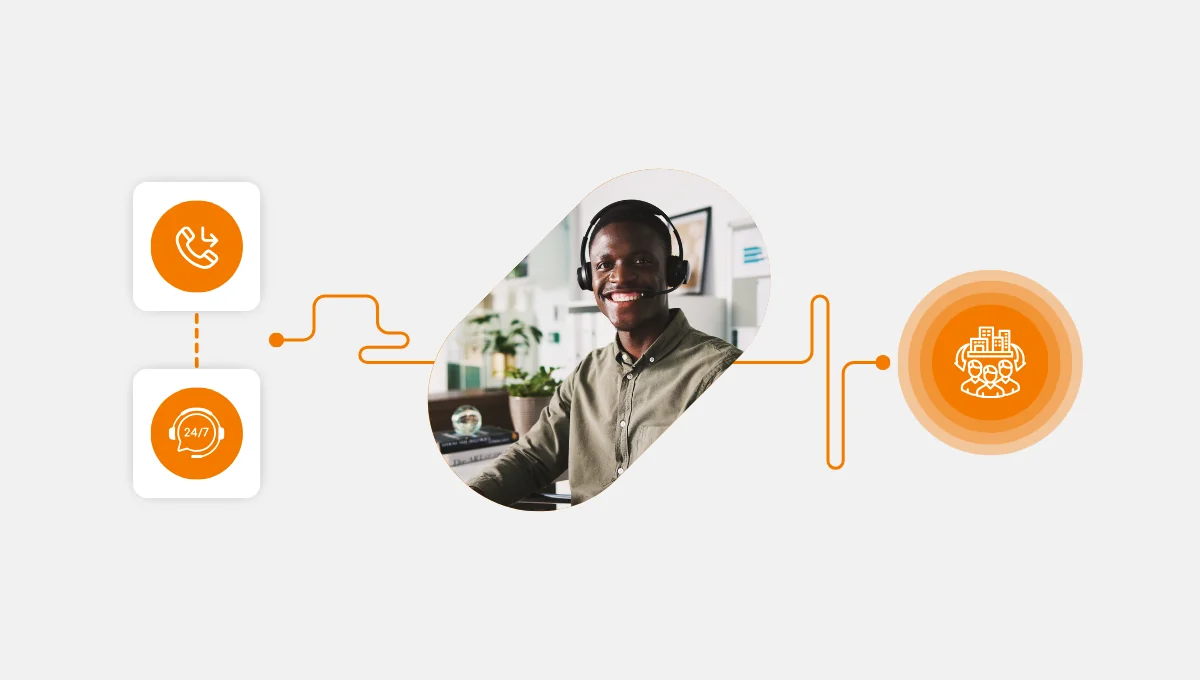When it comes to measuring customer satisfaction and improving customer experience, after-call surveys can be a valuable tool for businesses. However, without the right questions, it can be a challenge to gather the insights you need to make meaningful improvements.
In this article, we will outline tips for producing well-written after-call survey questions that can help you get the most out of your customer feedback.

What is an after-call survey for?
Businesses use after-call surveys to collect feedback from customers on their interactions with customer service agents over the phone. The survey is conducted immediately after the call.
The primary purpose of the after-call survey is to measure customer satisfaction and identify areas for improving customer service. By analyzing customers’ feedback, you can identify common issues and take steps to address them.
Additionally, you can use after-call surveys to gather data on customer preferences and behaviour. This can help improve products and services to better meet customer needs and enhance the overall experience.
In summary, an after-call survey is a useful tool for businesses seeking to improve customer service. By gathering feedback directly from customers, you can quickly gain key insights.
What are the components of a good after-call survey question?
Effective after-call survey questions should have the following components:
- Keep it short and sweet: avoid making the survey too long, as respondents may lose interest and drop out.
- Stick to a single topic: focus on one main topic per survey to avoid confusion or overwhelming the respondents.
- Ask specific questions: be clear and specific in your wording to avoid ambiguity or confusion in the respondent’s interpretation of the question.
- Avoid loaded questions: avoid phrasing questions in a way that may sway the respondent’s opinion or introduce bias.
- Use simple language: your questions should be simple and easy to understand so that the respondent can answer them accurately.
- Avoid yes/no questions: avoid limiting the respondent’s answer choices to just “yes” or “no” if you want more detailed information.
- Be clear about what you want to know: clearly state what information you are trying to gather from each question to avoid confusion or misinterpretation.
- Make sure the question is relevant: ensure that each question is directly related to the survey topic to avoid irrelevant or extraneous questions.
- Open-ended or closed-ended format: the question format depends on the type of information needed. Open-ended questions allow for detailed feedback, while closed-ended questions have specific answer options.
- Measurable responses: the question should result in measurable responses that you can easily analyze for trends and patterns.
- Pilot test your questions: test your survey questions with a small group of respondents before launching the full survey to identify any issues or areas for improvement.
By considering these components, you can ensure that your after-call survey question gathers valuable feedback from your customers.

What types of customer satisfaction survey questions should you avoid?
When creating a customer satisfaction survey, it’s also important to consider the types of questions you should avoid.
Here are some types of questions to avoid:
- Leading questions: you should avoid questions that suggest a particular answer or use biased language.
- Confusing questions: questions that are difficult to understand or have multiple meanings can lead to inaccurate results.
- Double-barreled questions: questions that ask two things at once can be confusing and lead to inaccurate results. For example, “Did you find our product helpful and easy to use?” is a double-barreled question.
- Jargon or technical language: if you use jargon or technical language, it can be difficult for respondents to understand. It’s important to use clear and easily understood language.
You can create a customer satisfaction survey that yields accurate and meaningful results by avoiding these types of questions.
Key takeaways
Writing effective after-call survey questions is crucial for businesses to gather valuable feedback from their customers. The tips in this blog post can ensure you that your survey questions are clear, concise, and relevant to the customer’s experience.
For the best customer service and maximum customer satisfaction, consider using appropriate software. When conducting an after-call survey, it is important to collect the necessary survey data easily. Call center software that meets all your needs is ideal in this case.
Call Center Studio offers satisfaction survey features to help you gather valuable feedback from your customers.
With Call Center Studio, you can easily access satisfaction survey results and reports, and analyse your customers’ satisfaction levels. This will take your service quality to the next level.
Don’t miss out on this opportunity to improve customer service and boost your business’s bottom line. Try Call Center Studio today.




